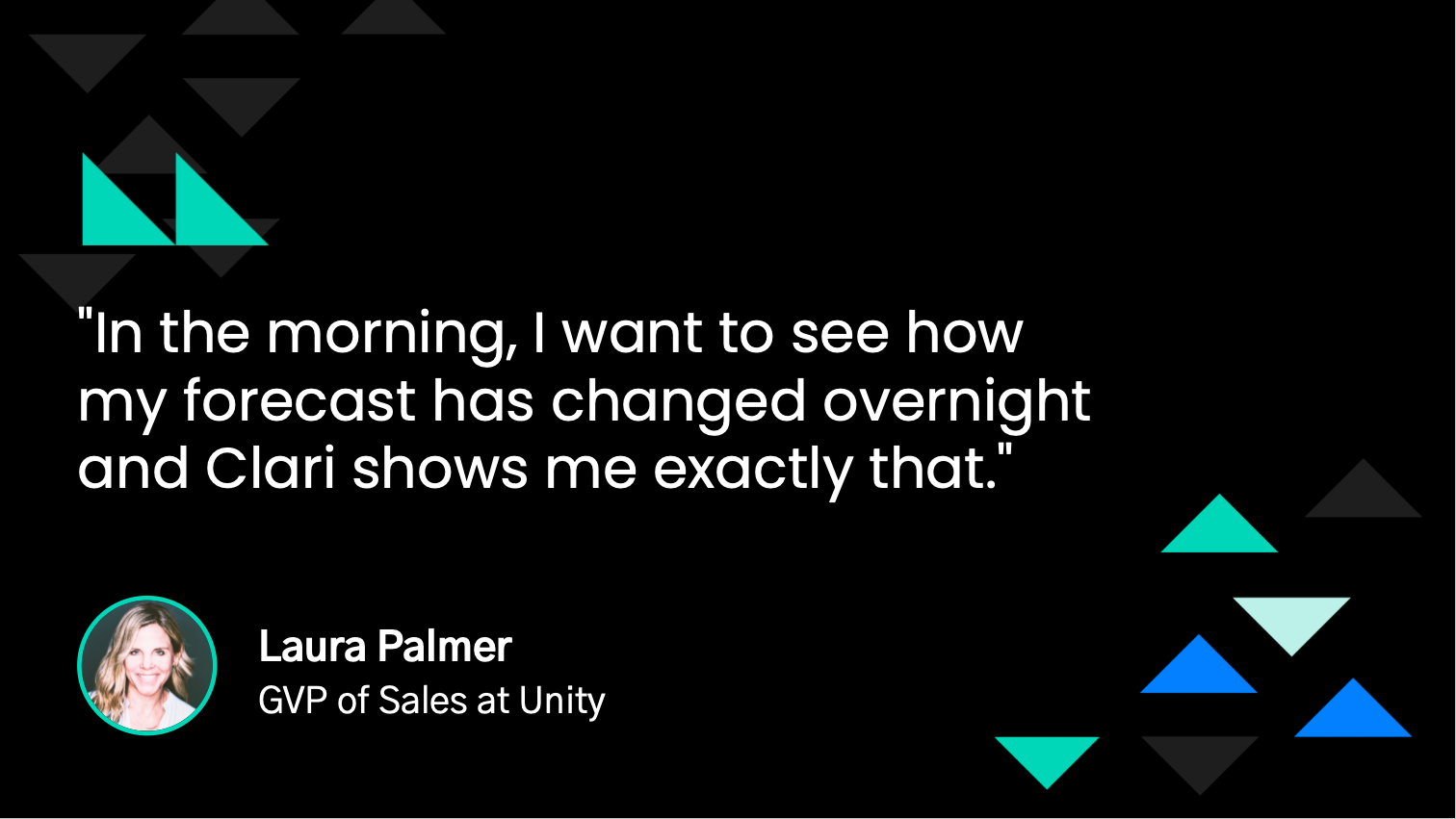From Guesswork to Precision
Let's be honest: forecasting has been broken for as long as I've been in sales leadership. We've all sat in those pipeline reviews where the numbers look solid on paper, but you know deep down that half those deals aren't closing this quarter. And when you miss the number, it's not just about explaining it to the board. It's about the sales reps you can't hire, the territories you can't expand, and the strategic bets you can't make because you didn't see it coming.
I've spent years trying to improve forecast accuracy with the tools we had: weekly forecast calls, CRM hygiene campaigns, multi-stage approval processes. But at the end of the day, we were still aggregating gut feelings in a spreadsheet and calling it a forecast.
That's changed. AI-driven forecasting is finally giving us what we've always needed: real predictive power. Not just rolling up what reps think will close, but analyzing patterns across thousands of deals to tell us what will actually close. It's turning forecasting from an art into a science—and giving CROs like us the confidence to make the right calls on revenue, capacity, and growth.
The high cost of inaccurate forecasts
When sales forecast accuracy suffers, the ripple effects impact every corner of your organization. Without solid data, finance teams struggle to plan budgets, marketing can't optimize spend, product development misallocates resources, and executives lose trust in their revenue operations team.
Traditional forecasting relies heavily on rep input, manager intuition, and manual data entry. These methods introduce bias, ignore critical signals, and fail to account for the complexity of modern sales cycles. The result is forecast variance that can swing 20-30% or more, making strategic planning nearly impossible.
BirchStreet achieved a 3-5% forecast accuracy every quarter using Clari.
How CROs can use AI to transform sales forecasting
Here's what AI actually does for your forecast: it eliminates the noise.
Every CRO knows the drill. Your AEs are eternal optimists. Your frontline managers are trying to protect their teams. And by the time deals roll up to you, you're looking at a number that's equal parts hope and politics.
AI cuts through all of that. It's looking at everything: deal velocity, engagement patterns, historical close rates by segment, even email sentiment. It's finding the signals that tell you whether that "90% commit" is real or just wishful thinking.
The result? You stop being surprised. Your variance tightens. And instead of spending forecast week negotiating with your team about which deals are real, you're having strategic conversations about where to deploy resources to actually move the number.
That's the difference between managing a forecast and actually controlling your revenue outcome.
Historical data analysis at scale
AI forecasting tools do one thing exceptionally well: they learn from what's actually happened. They analyze years of your closed deals—wins and losses— to figure out what really matters. Machine learning algorithms detect subtle patterns in deal velocity, engagement levels, competitive dynamics, and buyer behavior that predict outcomes with remarkable precision.
This isn't about replacing human judgment. It's about augmenting it with predictive analytics for sales that process information at a scale and speed impossible for manual methods. Having this data early allows reps to better prepare for their upcoming workload, and gives CROs the visibility to lean in on the deals that need the most support.
Real-time deal insights
Modern AI platforms provide real-time deal insights that give sales leaders unprecedented visibility into pipeline health. Rather than waiting for weekly forecast calls, managers can instantly see which deals are trending up or down based on activity patterns, sentiment analysis, and engagement metrics.
These insights give you time. The AI flags at-risk deals weeks out, not days before quarter-end. It surfaces deals that are actually accelerating so you can clear obstacles. Your team stops chasing ghosts and works deals that matter. And you get runway to fix problems instead of just reporting them.
Improving forecast accuracy with AI: Practical steps for CROs
Implementing AI to ensure forecast accuracy isn't about ripping out your entire tech stack. Here's how leading CROs are improving sales forecast accuracy today:
Start with clean, connected data. AI is only as good as the data it analyzes. Work with your CIO to connect your CRM, email systems, calendar tools, and other sales technology to create a comprehensive view of customer interactions. Data-driven forecasting requires this foundation.
Establish baseline metrics. Before deploying AI, measure your current forecast accuracy. Track variance by rep, by deal stage, and by product line. These benchmarks help you quantify improvement and build the business case for broader adoption.
Leverage predictive analytics for sales pipeline management. AI should inform which deals deserve attention, which require intervention, and which are tracking as expected. This focus helps managers prioritize coaching and remove obstacles.
Combine AI insights with sales expertise. The goal isn't to eliminate human judgment but to enhance it. Sales leaders who combine AI-driven insights with their market knowledge and relationship context achieve the highest forecast accuracy.
Iterate and refine continuously. AI models improve over time as they process more data. Regularly review forecast performance, feed results back into your systems, and adjust your approach based on what the data reveals.
The business impact of improved forecast accuracy
Organizations that successfully implement AI sales forecasting report dramatic improvements. Forecast variance drops from double digits to low single digits, revenue projections become reliable inputs for strategic planning rather than wishful thinking, and sales leaders spend less time debating pipeline and more time coaching reps to close deals.
Perhaps most importantly, improved sales forecast accuracy builds organizational confidence. When the board trusts your numbers, finance can plan with certainty, and marketing knows exactly how much pipeline to generate, your entire go-to-market engine runs more smoothly.
How CROs can use AI-Driven insights to break down silos
AI forecasting also solves a political problem: it gets everyone on the same page. In most orgs, sales has one number, finance has another, and ops is somewhere in between. Everyone's working off different spreadsheets with different assumptions. AI gives you one forecast, one source of truth. Sales can't sandbag it, finance can't second-guess it, and you stop wasting time in reconciliation meetings arguing about whose number is right.
This transparency extends beyond just the final number. Predictive analytics for sales reveal the underlying drivers of your forecast, showing which segments are accelerating, which products are gaining traction, and where pipeline coverage might be thin. The visibility you gain with a product like Clari allows sales teams to smash their quotas, and gives CROs a way to identify risks before they become a problem.
Scaling best practices across your team
AI also shows you why your A-players win more consistently. It analyzes what they actually do differently—how they engage stakeholders, their communication cadence, how they spot and kill risks early. No more guessing or relying on war stories in QBRs.
Once you see the patterns, you can coach to them. You take what your top 10% does naturally and build it into your playbook for everyone else. Suddenly forecast accuracy isn't just a reporting metric—it's a performance driver. Your middle performers start closing like your best reps because they're following the same plays that actually work.
The future is predictable
The shift from guesswork to precision isn't coming. The best revenue teams are already doing this. They're forecasting within 2-3% accuracy and actually hitting their numbers quarter after quarter. While you're still explaining miss after miss to your board, they're planning headcount with confidence and executing growth strategies that actually work.
You have a choice: adopt AI forecasting while it's still giving early movers an edge, or wait until it's table stakes and you're playing catch-up.
If you're tired of defending bad forecasts and missing the number, the answer's pretty straightforward. AI-driven forecasting gives you the accuracy your business needs and the credibility your career depends on.
Clari has changed how I lead, how I guide, and how I live my personal life. I always know where the business is, and having no surprises means I get great sleep.
To learn more about using predictive analytics and improving your forecasting with AI, read more about Clari’s AI-powered forecasting capabilities.





